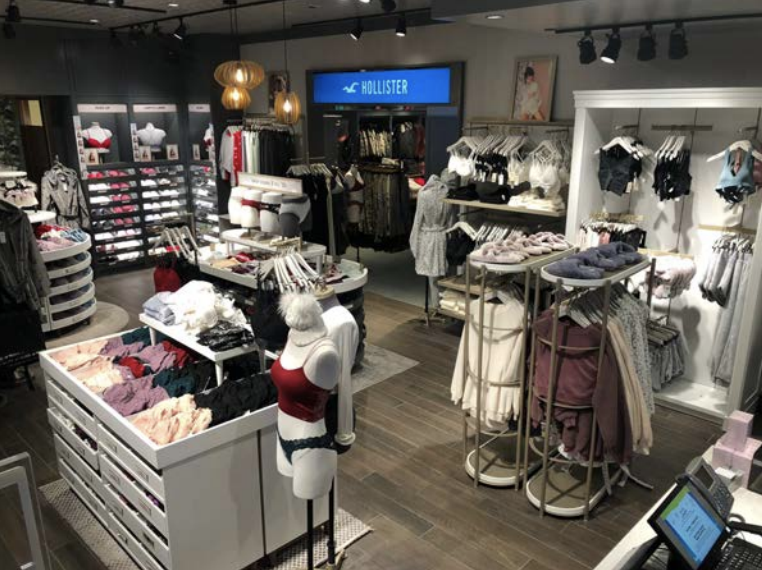Abercrombie & Fitch faces one of its biggest opportunities in 2020
The first chapter of Fran Horowitz’s time as CEO at Abercrombie & Fitch (ANF) was all about cleaning up the mess — in the stores and culturally — left by an out-to-lunch, long-time predecessor. As for the second chapter, which has largely played out successfully the past year or so — has revolved around slamming the reset button on the identity of the namesake apparel chain and sister brand Hollister.
Now Horowitz enters 2020 poised to embark on chapter three, one with an important opportunity to be exploited.
You see, over the next year and a half roughly 50% of Abercrombie’s U.S. store leases will be up for renewal. What does that mean precisely? Several things, all of which point to a highly probable outcome for investors to consider today: a more productive Abercrombie & Fitch in the age of digital shopping and increasingly fickle young adult shoppers. Said in non Wall Street speak, Abercrombie on paper should be more profitable as it renegotiates lower lease rates from struggling landlords.
The company could also exit stores completely — from expensive flagship locations to weak trafficked malls — it no longer deems worthy. That flat out will save money. And for those stores it does see as viable enough to deserve signing a long term lease, the company could shrink the size of them, pay less rent and remodel them to attract new shoppers.
Sounds like wins across the board. Yet, they are possible wins Wall Street still appears to be overlooking.
Abercrombie’s attack plan
Yahoo Finance catches up with Horowitz — a merchant at heart who took over as CEO in 2017 after turning around Hollister as president — inside a newly remodeled Abercrombie & Fitch store at Garden State Plaza mall in New Jersey. It’s a few days before Christmas and prime-time for retailers of all kind. “The store entrance is finally open, let’s go in,” I heard a teen girl tell her mom while waiting for Horowitz to arrive out-front. That’s exactly the reaction, and customer, Horowitz and her executive team are looking for the refurbished stores to attract.
Indeed the Garden State Plaza Abercrombie & Fitch store is a peek into the future of the 127-year-old apparel brand.
Gone are the imposing glass storefronts, replaced by an inviting open entry. It’s smaller in square footage (30% smaller, to be exact) than the Abercrombie & Fitch store that was at the mall previously. The same for the adjoining Abercrombie Kids store that finally looks and feels like a children’s apparel destination (not a scaled down Abercrombie adult store), replete with a coloring section by the fitting room.
Finally.
Both locations are well lit (wasn’t the case pre-Horowitz), the employees don handheld devices that will help check for additional styles and sizes for customers online. Fitting rooms have doorbells nearby that when pushed summon an employee for assistance finding extra sizes or to share key product details.

A dedicated desk for online order pickup exists, too, not unlike those found at Yahoo Finance Company of the Year Target’s stores.
“It’s a huge opportunity for us, one of our biggest opportunities in our go forward strategy is to actually reduce our square footage. Not necessarily to reduce the number of outlets we are in, but to actually reduce the square footage and become much more productive and profitable in the malls we have chosen to be in,” Horowitz tells Yahoo Finance in an exclusive interview inside the store.
Abercrombie & Fitch is no stranger to closing and shrinking the size of its mall stores, it has just done it more quietly than its dying foes in the mall, Gap and J.C. Penney. In fact, the company is viewed by experts as having identified the shift to digital shopping early and the need to have fewer stores — and subsequently moved fast to rework its store network.
The company currently has 677 stores open in the U.S., down from more than 1,000 in 2011. Overall, the company has 860 stores open in 21 countries. From 2010 to 2014, the company closed some 230 stores. In 2019, it will shutter up to 40.
It has opened or remodeled 350 stores from 2014 through 2019.
Now the company is shifting gears to focus on exiting the colossal flagship stores that became synonymous with the brand back in the 1990s and early-2000s. Earlier this year, the company said it would close flagships for Abercrombie and Hollister in New York over the course of 2019 and 2020. Flagships in Milan and Japan would also be shuttered.
More flagship closures internationally are possible in 2020 as Horowitz pivots to smaller stores in urban areas that better cater to the locals rather than volatile tourist traffic as flagships rely on. Horowitz firmly believes Abercrombie should still be an international brand, but with a local flare.
It makes 100% sense.
‘Focused on that young millennial’
Now the Street has to get on board modeling in the major rent relief coming down the pike for Abercrombie. For all of Horowitz’s success in bringing cool back to Abercrombie & Fitch for a new generation and the attractive lease schedule, Abercrombie’s stock trades on forward price-to-earnings multiple of 13.5 times. The broader stock market trades at 18 times. The stock is down 3% in the past year versus the S&P 500’s 37% gain.
People are out there shopping, flush with cash from a tight labor market sending wages higher and another year of gains for the bull market. Yet, here is a brand that has been around since 1892 and has several compelling profit catalysts on the three-year horizon trading as if it’s another laggard retailer.
Moreover, the company has made strong inroads online. Abercrombie pulled in $1 billion in online sales in 2018 and has the buy online, ship from store capabilities (and others) that is driving more business at big box stores.
The market could be cruel sometimes.

We wouldn’t be surprised if a year from now, the valuation discount on Abercrombie compared to the broad market is way narrower. And it would all be because of Horowitz’s keen eye to spot young millennial apparel trends — and drive harder bargains on leases.
“The next decade looks like for us becoming an even more vibrant global omni channel retailer,” says Horowitz. “We have an opportunity to move out of these flagships, grow in the malls, become more localized and less tourist driven. But we are focused on that young millennial, and they are responding to what we are doing.”
Brian Sozzi is an editor-at-large and co-anchor of The First Trade at Yahoo Finance. Follow him on Twitter @BrianSozzi
Read the latest financial and business news from Yahoo Finance
Beyond Meat founder: things are going very well with McDonald’s
Starbucks CEO on what China has in store for the coffee giant
Follow Yahoo Finance on Twitter, Facebook, Instagram, Flipboard, SmartNews, LinkedIn, YouTube, and reddit.
